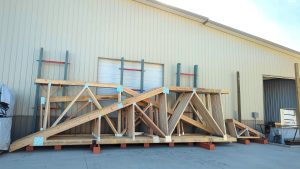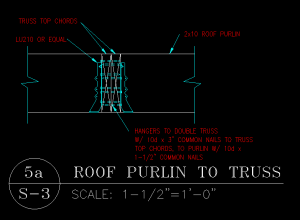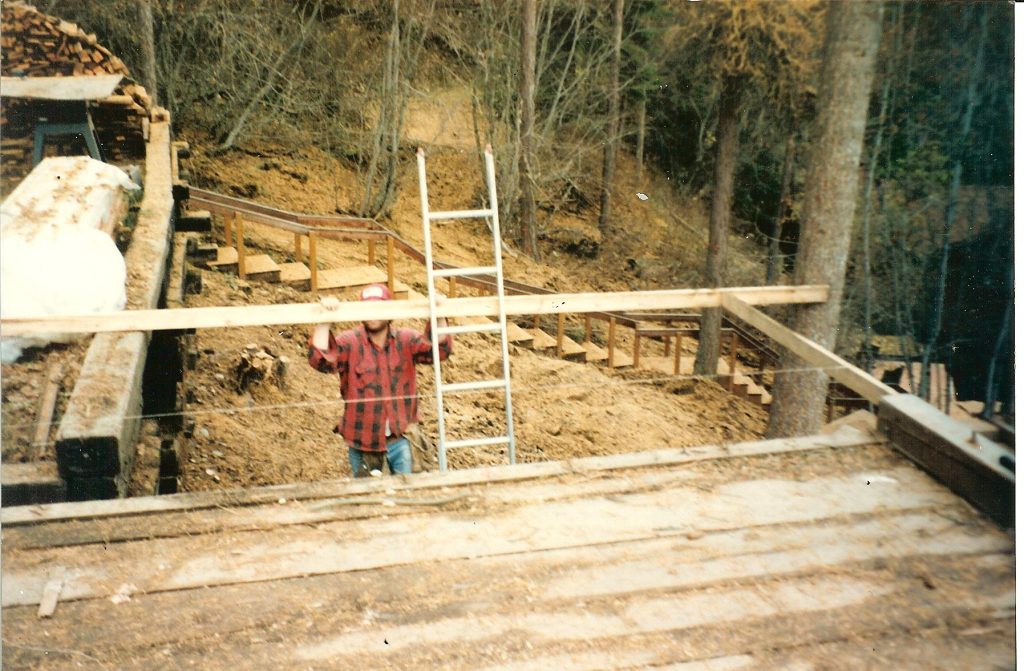I have to give a lot of credit to Building Department plan checkers and field inspectors. They have to know a lot of stuff, about a myriad of different areas of construction. Even one who is an expert at what is written in the Building Code itself, would be only fluent in a small portion of what it takes to construct a Code conforming building, as the Building Codes now reference a litany of other publications and documents. Think of it as being similar to the IRS income tax code.
Puts it into perspective, doesn’t it?
 Prefabricated roof truss drawings (provided by the roof truss manufacturers) give the recommendation for how the truss designer feels the trusses should be braced, however the ultimate design of the truss bracing system, is the responsibility of the building designer (registered design professional – engineer or architect).
Prefabricated roof truss drawings (provided by the roof truss manufacturers) give the recommendation for how the truss designer feels the trusses should be braced, however the ultimate design of the truss bracing system, is the responsibility of the building designer (registered design professional – engineer or architect).
Recently one of our clients advised our office of the request, from their building inspector, for an email or letter from the engineer of record on their new Hansen post frame building. The request was in regards to the truss bracing system designed by the engineer superseding the bracing shown on the roof truss drawings.
Although the following may sound like it is in a foreign language, on the first page of the engineered building plans is a series of “General Notes”. Note 9 says:
“PER ANSI/TPI 1-2007 SECTION 2.3.2.3 TRUSS SUBMITTALS HAVE BEEN REVIEWED AND ARE FOUND TO BE IN GENERAL CONFORMANCE WITH THE DESIGN OF THE BUILDING. THE PERMANENT LATERAL BRACING HEREIN MEETS THE REQUIREMENTS OF ANSI/TPI 1-2007 SECTION 2.3.3.2”
ANSI/TPI 1-2007 pretty much lays out who does what and how. Here are some relevant excerpts:
2.3.2.5 Responsibility Exemptions.
The Registered Design Professional for the Building is responsible for items listed in 2.3.2, and is not responsible for the requirements of other parties specified outside of Section 2.3.2.
2.3.3.1 Method of Restraint.
The method of Permanent Individual Truss Member Restraint/Bracing and the method of anchoring or restraining to prevent lateral movement of all Truss members acting together as a system shall be accomplished by:
2.3.3.2 Method Specified by any Registered Design Professional.
The method of Permanent Individual Truss Member Restraint and Diagonal Bracing for the Truss Top Chord, Bottom Chord, and Web members shall be permitted to be specified by any Registered Design Professional.
On this particular project, general note 9 covered the permanent lateral truss bracing system and is sealed by the Engineer of Record. This makes the request for an Email or letter from the engineer to cover the same topic redundant, as well as an unneeded expense to the building owners (engineers do not just do work for free).
Potentially, the building inspector could decide to alter the truss bracing system designed by the Engineer of Record, however this opens up an entirely new can of worms. In making an alteration, the inspector could be in violation of the laws which govern engineers, as well as placing the jurisdiction in a liability situation should a failure occur.









